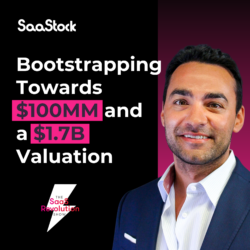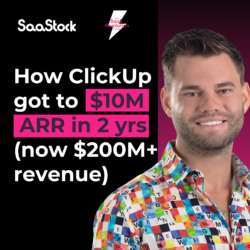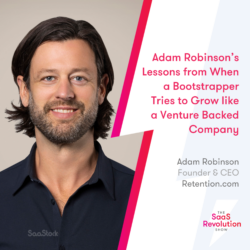Beyond the LinkedIn hot takes, here’s what it actually feels like on both sides
There’s a quiet eye-roll happening in every startup Slack channel these days.
On one side, bootstrapped founders post selfies in hoodies, bragging about “not having a boss” and hitting $1M ARR with zero funding. On the other, VC-backed founders talk about blitzscaling, hiring fast, and building unicorns before breakfast.
And in the middle? A lot of real founders trying to figure out what the hell to do—and what’s actually true.
Because here’s the thing most Twitter threads won’t tell you: both paths are hard. Both come with trade-offs. And both feel very different when you’re living them, not just tweeting about them.
So we talked to founders on both sides—those who went big and took funding, and those who kept things lean and owned every cent. Here’s what they really think.
Let’s start with the fantasy
The bootstrapped myth:
You own 100%, have zero meetings with investors, work from a beach, and build exactly what you want without compromise.
The VC-backed myth:
You raise $10M, hire a dream team, become a category leader in 3 years, and exit for a life-changing multiple—then post a thread about what you learned.
In practice? The bootstrapped founder still has clients who ghost, slow growth periods, and cash flow stress. The VC-backed founder spends half their time pitching, justifying, and recalibrating after missed OKRs.
The myth is good marketing. The reality is… nuanced.
Bootstrapping: full control, full weight
For many founders, bootstrapping isn’t about being frugal. It’s about being free.
You build the product your way. You choose your market. You set your pace. You keep your cap table clean. And if you’re lucky and good? You grow a calm, profitable business without answering to anyone.
“The best part? I never have to take a meeting I don’t want to,” said one bootstrapped SaaS founder with $3.5M ARR and a team of 9. “The worst part? When sh*t hits the fan, it’s all on me.”
What founders say they love about bootstrapping:
- Focus – fewer distractions, more time building
- Customer alignment – you serve the person who pays you, not an investor
- Ownership – both financial and creative
- Sustainability – no pressure to 10x in 12 months
Some founders even use tools like the Wix affiliate plugin to create additional revenue streams and manage affiliate partnerships, making it easier to scale with fewer resources. It’s all about leveraging the right tools to stay lean and efficient.
What they hate:
- Loneliness – no board, no sounding board
- Resource limits – everything takes longer
- Hiring pain – can’t always afford top talent early
- Cash anxiety – one bad month can knock you sideways
Bootstrapping forces clarity. You can’t buy growth. You have to earn it.
But it’s also a mindset. Some founders thrive on independence. Others feel boxed in by it.
VC funding: speed, spotlight, and stress
Raising capital is a dopamine rush. You get the money. The PR. The validation. Your vision gets a shot of jet fuel.
“It felt like winning startup gold,” one Series A founder told us. “And then came the oh-sh*t moment—now I have to turn this capital into serious momentum.”
What VC-backed founders love:
- Acceleration – hire faster, ship faster, test more
- Access – intros to talent, customers, press, partners
- Credibility – fundraising is social proof, like it or not
- Ambition – you’re building something that could really scale
What they struggle with:
- Investor management – monthly updates, tough questions, conflicting advice
- Growth pressure – the bar keeps rising
- Loss of control – especially in later rounds
- Dilution – you might own a lot less of what you built
VC funding gives you more bets to play—but raises the stakes on every decision. You can grow big. Or crash hard. And either way, you’re doing it on someone else’s timeline—like trying to complete an escape room while someone else counts down the time.
The money question: lifestyle business vs. swing-for-the-fences?
Let’s be real: this is where the tension lives.
Founders who bootstrap are often accused of “thinking small” or “playing it safe.” Founders who raise are accused of chasing valuation over value.
But the real question is: what kind of life do you want to build around the business?
Some bootstrapped founders pull $500K a year in profit and live well, without stress. Others reinvest everything for years and build slowly. Some VC-backed founders take home less than their employees while aiming for a massive exit in 7 years. Others never make it there.
Profitability vs. potential. Ownership vs. opportunity. It’s not good vs. bad—it’s personal.
One founder put it best:
“VC is like strapping a rocket to your back. Bootstrapping is like pushing a boulder uphill. Both can get you to the top. Depends on your legs.”
What VCs won’t tell you (and what bootstrappers forget)
There’s a lot of noise in both camps. But if you strip out the ego, here’s what many founders quietly admit:
- Raising money is not a success. It’s an agreement—with strings.
- Not raising money is not a virtue. It’s a trade-off—sometimes an expensive one.
- Some markets require funding (deep tech, infrastructure, etc.). Others thrive bootstrapped.
- Timing matters. So does your network. So does your appetite for risk.
- No one path guarantees success. Or failure. There are bootstrapped duds and funded darlings—and vice versa.
The smartest founders don’t get ideological. They get intentional.
They ask:
→ What do I want this company to look like in 3 years?
→ What pace can I realistically sustain?
→ Where will capital help—and where will it complicate?
They don’t choose based on what Twitter says. They choose based on who they are.
So… which one should you choose?
There’s no right answer. But here’s a quick cheat sheet based on what we’ve heard again and again:
Go bootstrapped if you:
- Crave autonomy above all
- Have a strong go-to-market motion early (agency → product, audience-first)
- Value profitability, control, and optionality
- Are OK with slower growth, fewer resources, and owning more risk
Go VC-funded if you:
- Are chasing a huge, competitive, fast-moving market
- Need serious capital to build the product or acquire customers
- Thrive under pressure and structure
- Are prepared to give up equity—and some control—for a shot at big scale
And if you’re unsure? Start bootstrapped. You can always raise later. But you can’t always unraise.
What hybrid founders are saying
There’s a third path we haven’t talked about much: the hybrid approach. Some founders bootstrap to traction, then raise strategically. Some raise a small angel round and treat it like a bridge, not a rocket. Some do revenue-based financing. Some skip VC and work with strategic acquirers or funds quietly.
The modern founder playbook is messy—and that’s a good thing.
“We bootstrapped to $1M ARR, then raised $2M to scale content and dev,” one founder said. “Now we have room to breathe, but we still run like owners. It’s the best of both worlds—if you’re careful.”
It’s not about purity. It’s about knowing what you need—when you need it—and building your capital stack like a strategy, not a badge. However, it’s important to recognize that navigating this hybrid approach also involves understanding the challenges of digital transformation. As businesses adapt to new technologies and market demands, founders must be prepared to address shifting dynamics while leveraging their unique funding strategies effectively.
Some other startups like Lemlist or Veed.io have decided to grow to $10M ARR and $6M ARR before cashing out $30M for the first, and raising $35M with Sequoia for the second, everything is possible BUT you stay in control. Other bootstrapped startups in this trajectory include Findymail or Breakcold.
Final thought: Ignore the noise. Listen to the math and your gut.
In the end, this isn’t about bootstrapping vs. fundraising. It’s about alignment.
What kind of company do you want to run? What kind of life do you want it to power? What are you willing to trade—and what’s non-negotiable?
The best founders we talked to weren’t smug about their choice. They were clear-eyed. They didn’t chase what sounded cool. They chose what made sense—for their business, their team, and their life.
And if you’re still torn?
Start building. Talk to your customers. Talk to your accountant. Talk to your therapist. And when the time comes to choose—choose what helps you build well, not just build fast.




